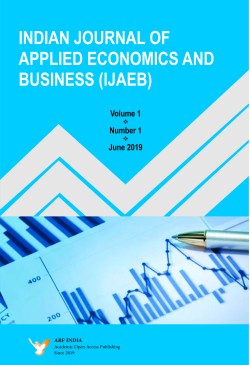
Indian Journal of Applied Economics and Business
Frequency :Bi-Annual
ISSN :2582-4325
Peer Reviewed Journal
A Study on the Changes in the Composition of Portfolio of Select Mutual Fund Schemes due to COVID-19 Pandemic
The Indian Manufacturing Sector: Finance, Investment and Performance of Firms
Impact of Monetary and Macroprudential Policies on Financial Stability
International Trade, Consumer Protection and Public Health in Nigeria: An Empirical Analysis
Relationship Between Liquidity, Profitability, Financial Leverage and Dividend Policy: With Special Reference to Automobile Sector in India
An Application of Thirlwall's Model to Botswana's Economic Growth
Reinvest the Relationship between Exports and Economic growth in African Countries: New Insights from Innovative Econometric Methods